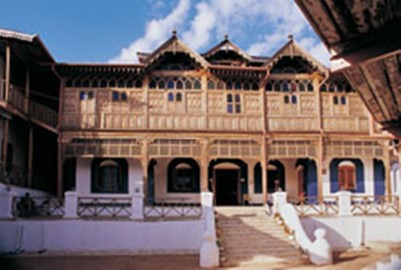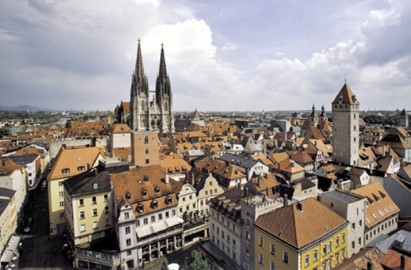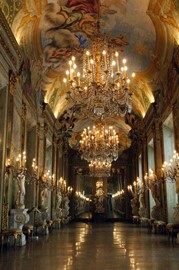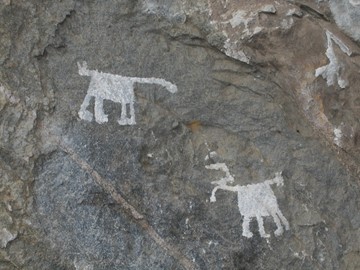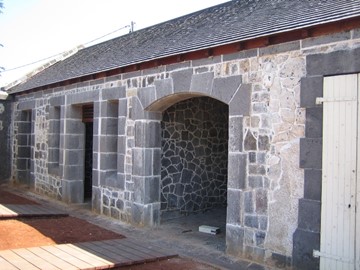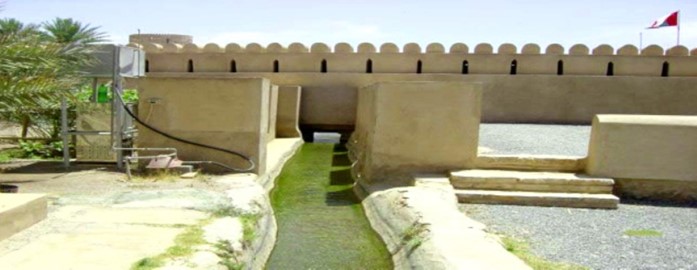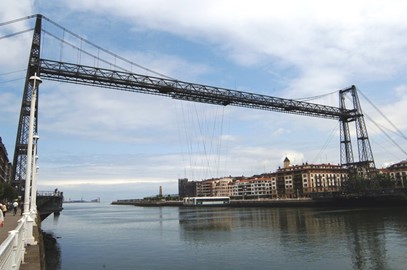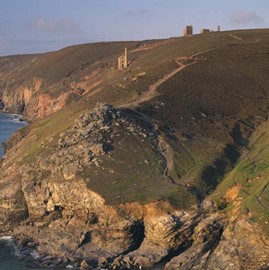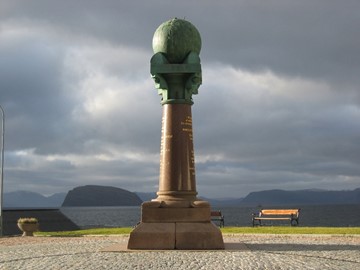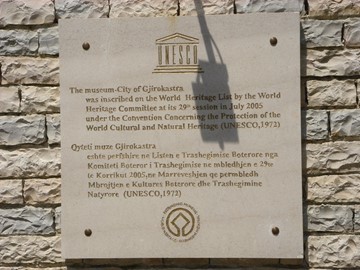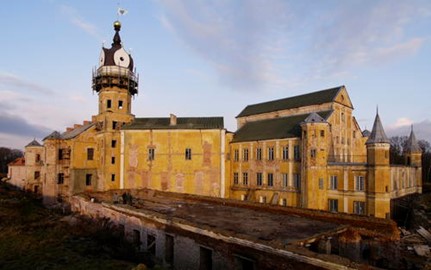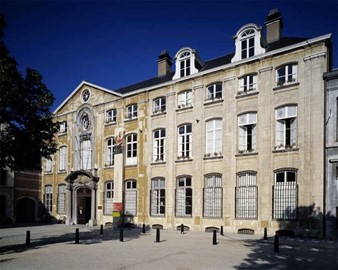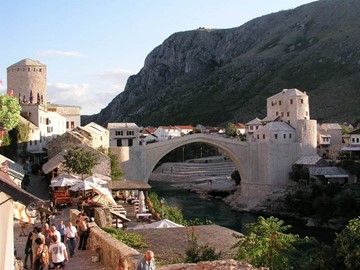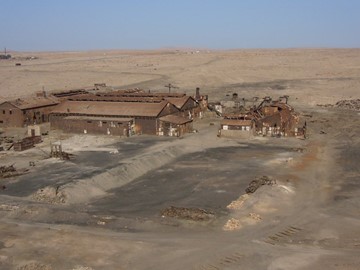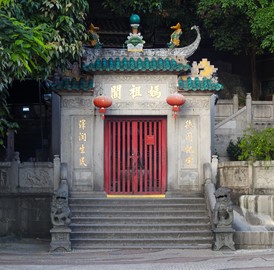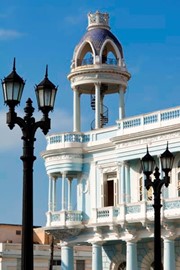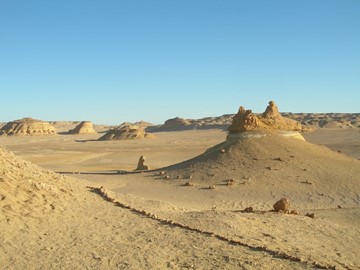search
Malpelo Fauna and Flora Sanctuary
The Malpelo Flora and Fauna Sanctuary, a UNESCO World Heritage Site in Colombia, is a remote marine park in the Eastern Tropical Pacific, renowned for its exceptional biodiversity. This protected area serves as a critical habitat for threatened marine species, including large aggregations of hammerhead and silky sharks, whale sharks, giant grouper, and billfish, thriving in an undisturbed environment. Its rugged underwater landscapes, featuring steep walls and caves, make it one of the world’s premier divin... Read More
Harar Jugol
Harar Jugol, a UNESCO World Heritage site in Ethiopia, is a fortified historic town renowned for its rich Islamic heritage and unique cultural blend. Enclosed by walls built between the 13th and 16th centuries, it features 82 mosques, including three from the 10th century, and over 100 shrines, earning it the title of Islam’s “fourth holiest city.” The town’s traditional Harari houses, with their distinctive interior designs, reflect a fusion of African and Islamic architectural influences, while its maze-l... Read More
Regensburg
Old town of Regensburg, a UNESCO World Heritage site in Germany, is a well-preserved medieval city renowned for its historical significance and architectural treasures. Founded by the Romans in 179 AD as a military camp, it evolved into a thriving trade center by the Middle Ages, boasting over 1,500 listed buildings, including the Gothic St. Peter’s Cathedral and the 12th-century Stone Bridge. Its old town, with narrow cobblestone streets and colorful facades, reflects a rich cultural heritage spanning near... Read More
Bisotun
Bisotun, a UNESCO World Heritage site in Iran, is renowned for its ancient rock reliefs and inscriptions dating back to 521 BCE. The site features a multilingual inscription by Darius the Great, carved into a cliff, which celebrates his victories and divine right to rule, written in Old Persian, Elamite, and Babylonian. Alongside this, the area includes archaeological remains from various periods, such as Parthian and Sassanian ruins, showcasing its historical significance as a cultural crossroads. Bisotun ... Read More
Genoa
Genoa's Le Strade Nuove and the Palazzi dei Rolli, a UNESCO World Heritage site in Italy, represent a pioneering urban planning and architectural ensemble from the late 16th and early 17th centuries. This historic district features elegant streets lined with grand palaces, originally built by the city’s aristocratic families to host distinguished guests. The innovative 'Rolli' system, a public lottery assigning lodging duties to these residences, highlights Genoa’s unique hospitality tradition and its statu... Read More
Chongoni Rock Art Area
This World Heritage site in Malawi features an exceptional concentration of ancient rock art, with over 120 sites showcasing paintings by hunter-gatherer and farming communities. Spanning thousands of years, the artwork reflects cultural traditions, rituals, and the spiritual beliefs of the people who once inhabited the region’s granite hills. Preserved by natural rock shelters, these vivid depictions offer a rare glimpse into the historical and artistic legacy of central Africa.
Aapravasi Ghat
Aapravasi Ghat, a UNESCO World Heritage site in Mauritius, served as an immigration depot from 1849 to 1923, where over half a million indentured laborers from India arrived to work on sugar plantations. Built in 1849, this historic complex includes remnants of the original structures like the steps, hospital block, and sheds, reflecting its role in the global migration of labor during the colonial era. It stands as a testament to the indentured labor system that shaped modern Mauritius and influenced plant... Read More
Tequila
The Agave Landscape and Ancient Industrial Facilities of Tequila, a UNESCO World Heritage site in Mexico, showcase a unique blend of natural and cultural heritage in Mexico. This region features expansive blue agave fields, cultivated for centuries to produce tequila, alongside historic distilleries and haciendas that reflect traditional production methods. Recognized for its significance in shaping tequila’s global identity, the site highlights the interplay between agriculture, industry, and cultural trad... Read More
Aflaj Irrigation Systems
The Aflaj Irrigation Systems, recognized as a UNESCO World Heritage site, are an ancient network of water channels that showcase Oman's ingenious engineering heritage. Dating back over 2,000 years, these systems use gravity to transport water from underground sources and springs to support agriculture and settlements in arid regions. Comprising a complex arrangement of tunnels, channels, and aqueducts, the aflaj demonstrate sustainable water management and communal cooperation, maintained through traditiona... Read More
Centennial Hall in Wroclaw
Centennial Hall in Wrocław, Poland, is an iconic World Heritage site renowned for its pioneering reinforced concrete design, completed in 1913 by architect Max Berg. Originally built as an exhibition hall to commemorate the centennial of the Battle of Leipzig, it features a distinctive symmetrical structure with a vast central dome, showcasing early 20th-century engineering innovation. Today, it serves as a multifunctional venue for cultural and sporting events, reflecting its enduring historical and archit... Read More
Vizcaya Bridge
The Vizcaya Bridge, a UNESCO World Heritage site in Spain, is an iconic transporter bridge completed in 1893, designed by architect Alberto de Palacio. It stands as a remarkable feat of industrial engineering, blending iron construction with innovative technology to ferry passengers and vehicles across the river via a suspended gondola. Recognized for its historical and architectural significance, it symbolizes the ingenuity of the late 19th century and remains operational today.
Crac des Chevaliers
Crac des Chevaliers, a UNESCO World Heritage site in Syria, is a remarkably preserved medieval castle built by the Knights Hospitaller in the 12th century. Renowned for its impressive Crusader architecture, the fortress features robust stone walls, towers, and intricate defensive systems, showcasing the military engineering of its time. It served as a key stronghold during the Crusades, symbolizing the power and influence of the Christian military orders in the region. Today, it stands as a testament to Syr... Read More
Cornwall and West Devon
This UNESCO World Heritage site in the UK is renowned for its historical significance and natural beauty. It features a dramatic landscape shaped by centuries of industrial mining, with remnants of engine houses, chimneys, and mineral-rich cliffs that highlight its pioneering role in the Industrial Revolution. The site also includes a world-class botanical garden, showcasing an extensive collection of plants from across the globe within iconic glasshouses. Together, these elements reflect a unique blend of ... Read More
Kondoa Rock Art
The Kondoa Rock-Art Sites, a UNESCO World Heritage Site in Tanzania, feature an impressive collection of ancient rock paintings found in natural shelters along the Masai escarpment. Created over millennia by hunter-gatherer and pastoralist communities, the artwork depicts elongated human figures, animals, and scenes of daily life, showcasing a unique streaky style and high artistic value. These sites also hold cultural significance, as some shelters remain part of local rituals, reflecting a living heritage... Read More
Struve Geodetic Arc
The Struve Geodetic Arc, a UNESCO World Heritage site in Europe, recognized in 2005, is a network of 34 survey points across 10 countries—Belarus, Estonia, Finland, Latvia, Lithuania, Norway, Moldova, Russia, Sweden, and Ukraine—established by astronomer Friedrich Georg Wilhelm Struve between 1816 and 1855. Stretching over 2,820 kilometers, these markers measured the Earth’s meridian arc, advancing geodesy and mapping precision. This transnational site reflects Europe’s scientific heritage, showcasing a mon... Read More
Berat and Gjirokastra
Berat and Gjirokastra, a UNESCO World Heritage site in Albania, recognized in 2005 and extended in 2008, are two historic Ottoman towns showcasing rare Balkan architecture from the 13th to 19th centuries. Berat, the 'City of a Thousand Windows,' features whitewashed houses and a hilltop castle, while Gjirokastra’s stone-roofed homes and bazaar reflect medieval urban life. This dual site highlights Albania’s cultural heritage, preserving a unique blend of Ottoman and local traditions in picturesque settings.... Read More
Qal’at al Bahrain
Qal’at al-Bahrain, a UNESCO World Heritage site in Bahrain, is an ancient fortress and archaeological marvel renowned for its layered history. This coastal citadel, with roots tracing back over 4,000 years, features remnants of Dilmun, Persian, and Portuguese civilizations, including a towering fort and intricate ruins. Once a thriving trading hub, it overlooks the sea with stone walls and mounds revealing artifacts of past cultures. This well-preserved site stands as a testament to Bahrain’s strategic and ... Read More
Nesvizh Radziwill Family Complex
The Architectural, Residential and Cultural Complex of the Radziwill Family at Nesvizh, a UNESCO World Heritage site in Belarus, is a magnificent 16th-century palace and estate celebrated for its architectural splendor and historical importance. Blending Renaissance and Baroque styles, its ornate interiors, fortified walls, and landscaped gardens reflect the wealth and influence of the Radziwill dynasty. The adjacent Corpus Christi Church, a family mausoleum, adds spiritual depth to the site. This grand com... Read More
Plantin Moretus House
The Plantin-Moretus House, a UNESCO World Heritage site in Belgium, is a preserved 16th-century printing workshop and family home, celebrated as the world’s first museum of its kind. Established by Christophe Plantin and continued by the Moretus family, it houses historic printing presses, rare books, and archives, showcasing the dawn of modern publishing. Recognized by UNESCO in 2005, it offers a unique glimpse into Renaissance and Baroque intellectual life. The site remains a treasure of Belgium’s cultura... Read More
Mostar
Mostar, a UNESCO World Heritage site in Bosnia and Herzegovina, is a historic city famed for its iconic Old Bridge and cultural diversity. Built in the 16th century by the Ottomans, the elegant stone bridge spans the river, linking the city’s blend of Eastern and Western architectural styles. Recognized by UNESCO in 2005, it symbolizes resilience and reconciliation after wartime destruction. Mostar remains a vibrant testament to the country’s multicultural heritage.
Humberstone and Santa Laura Saltpeter Works
Humberstone and Santa Laura Saltpeter Works, a UNESCO World Heritage site in Chile, are abandoned 19th- and early 20th-century mining towns in the Atacama Desert. Once thriving hubs of saltpeter extraction, their preserved machinery, worker housing, and public buildings reflect the nitrate boom’s social and industrial impact. Recognized for their historical significance, they stand as haunting relics of Chile’s economic past.
Macau
The Historic Centre of Macau, a UNESCO World Heritage site in China, is a vibrant fusion of Chinese and Portuguese colonial heritage. Featuring cobblestone streets, baroque churches, and traditional temples, it reflects centuries of cultural exchange as a trading hub. Iconic landmarks like fortress ruins and pastel-colored buildings highlight its unique East-meets-West identity, preserving a rich historical tapestry.
Cienfuegos
Cienfuegos, a UNESCO World Heritage site in Cuba, is a 19th-century colonial city renowned for its elegant French-inspired architecture and waterfront charm. Featuring wide boulevards, neoclassical buildings, and a grand theater, it reflects urban planning from Cuba’s sugar boom era. This well-preserved gem offers a glimpse into a refined historical and cultural legacy.
Wadi Al Hitan
Wadi Al Hitan, a UNESCO World Heritage site in Egypt, is a remarkable paleontological treasure known as the 'Valley of the Whales.' This desert landscape preserves an extraordinary collection of fossilized remains, including ancient whale skeletons dating back over 40 million years, offering a unique glimpse into the evolution of marine mammals. The site's well-preserved fossils, dramatic scenery, and scientific significance make it a vital record of Earth's history, attracting researchers and visitors alik... Read More
Le Havre
Le Havre, a UNESCO World Heritage site in France, is a remarkable example of post-World War II urban planning and architecture. Designed by Auguste Perret, the city showcases a modernist reconstruction with innovative use of reinforced concrete, blending functionality with aesthetic harmony. Its unique layout, featuring wide boulevards and a grid pattern, reflects a vision of renewal after wartime destruction. Key landmarks, like the St. Joseph’s Church with its striking tower, highlight Le Havre’s cultural... Read More

